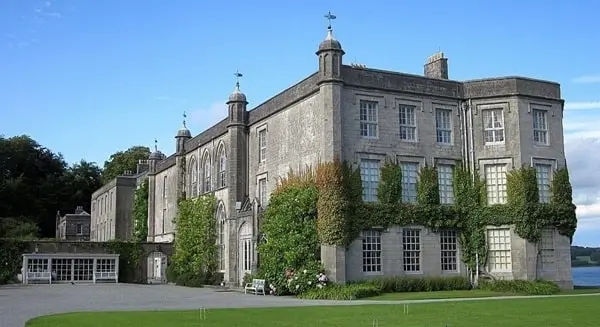Tourism has long been a cornerstone of the Welsh economy, drawing millions of visitors each year to its rolling hills, rugged coastlines, and vibrant cultural landmarks. However, in recent years, it has become increasingly clear that tourism is not only a significant economic driver but also a key factor influencing the Welsh property market. From increased demand for holiday homes to rising house prices in rural areas, the influx of visitors is reshaping the housing landscape in Wales in various ways. In this blog, we explore the positive and negative impacts of tourism on the property market in Wales, with a focus on how it affects both local residents and prospective buyers.
The Growth of Tourism in Wales
Wales is a destination that offers a unique blend of natural beauty, heritage, and adventure, making it a popular choice for both domestic and international travellers. According to Visit Wales, tourism brings in billions of pounds annually, contributing to a broad range of sectors, including hospitality, retail, and real estate. This thriving tourism industry has led to the development of more short-term rental properties and holiday homes, particularly in scenic regions such as Snowdonia, Pembrokeshire, and the Brecon Beacons.
However, while tourism helps fuel the local economy, it also creates certain pressures on the property market. This is most evident in the increased demand for second homes and holiday lets, which has led to competition with local buyers and, in some cases, driven up property prices in tourist-heavy areas.

Rise in Demand for Holiday Homes
One of the most significant impacts of tourism on the Welsh property market has been the rise in demand for holiday homes. Areas known for their picturesque landscapes and proximity to tourist attractions have seen a surge in interest from buyers looking to invest in second homes or holiday lets. Locations such as Tenby, Anglesey, and Llandudno are particularly sought after, with many properties being purchased specifically for rental purposes.
For investors, buying a holiday home in Wales can be a lucrative venture. Platforms like Airbnb and Vrbo have made it easier than ever to list properties for short-term rent, and the steady flow of tourists ensures a high occupancy rate throughout much of the year. However, this trend has caused concern among local communities, as the influx of second-home buyers can lead to rising house prices and a shortage of affordable housing for residents.
Impact on House Prices
The growing popularity of Wales as a tourist destination has had a noticeable impact on house prices, particularly in rural and coastal areas. With many buyers from other parts of the UK looking to secure holiday homes, the competition for properties has intensified. As demand outstrips supply, prices have inevitably risen, often making it difficult for local residents, especially first-time buyers, to enter the property market.
In some areas, local councils have taken steps to address this issue by introducing restrictions on the number of second homes or increasing council tax rates for non-resident owners. Despite these measures, the demand for holiday homes continues to drive prices upward, leading to a widening gap between local wages and property values.
Short-Term Rentals and the Local Housing Market
The rise of platforms like Airbnb has also had a profound impact on the Welsh property market. Many property owners have shifted their focus from long-term rentals to short-term holiday lets, attracted by the potential for higher returns. While this has been beneficial for property investors, it has led to a reduction in the availability of long-term rental homes, particularly in popular tourist areas.
For local residents, especially those who rely on the rental market, this shift has created challenges. Fewer rental properties are available, and those that remain on the market are often more expensive. This has raised concerns about the long-term sustainability of housing in areas that are heavily reliant on tourism, as the local population may be forced to move elsewhere in search of more affordable accommodation.
Economic Benefits and Infrastructure Development
While tourism has created some challenges for the property market in Wales, it has also brought significant economic benefits. The influx of visitors supports local businesses, creates jobs, and encourages investment in infrastructure, such as transport links, retail centres, and leisure facilities. These developments, in turn, enhance the appeal of certain areas, attracting more people to live and work there.
For example, the popularity of coastal towns like Aberystwyth and Conwy has led to improvements in local amenities and infrastructure, making these areas more desirable for both tourists and permanent residents. The economic boost provided by tourism can therefore have a positive knock-on effect on the property market, as improved facilities and services make these regions more attractive to buyers.
Balancing Tourism and Housing Needs
The challenge for Wales moving forward is to strike a balance between maintaining a thriving tourism industry and ensuring that local residents are not priced out of the housing market. While tourism brings undeniable benefits to the economy, there is a need for careful regulation and planning to manage the impact on property availability and affordability.
One potential solution is the introduction of affordable housing schemes, which could help local buyers compete with investors looking to purchase second homes. Additionally, restrictions on holiday let licences and second-home ownership could be considered to protect the housing needs of the local population.
Conclusion
Tourism plays a vital role in shaping the property market in Wales, offering both opportunities and challenges. On the one hand, it has driven demand for holiday homes and created opportunities for property investors. On the other hand, it has contributed to rising house prices and a shortage of affordable housing for local residents.
For those looking for property for sale in Wales, it is important to be aware of these dynamics and consider how tourism might impact both the affordability and availability of housing in different regions. As Wales continues to attract visitors from far and wide, finding a balance between supporting tourism and addressing housing needs will be key to sustaining its vibrant communities and property market.













